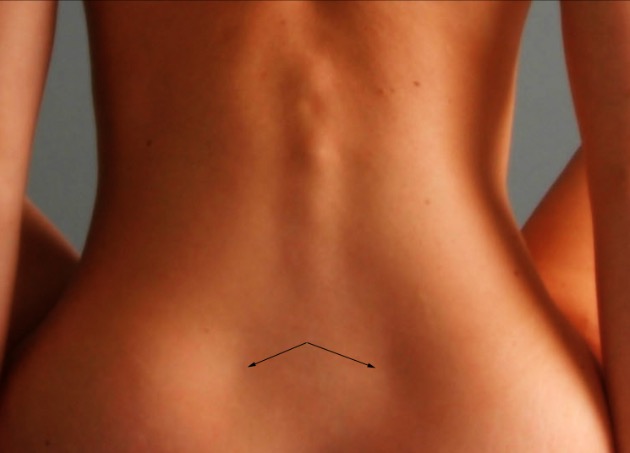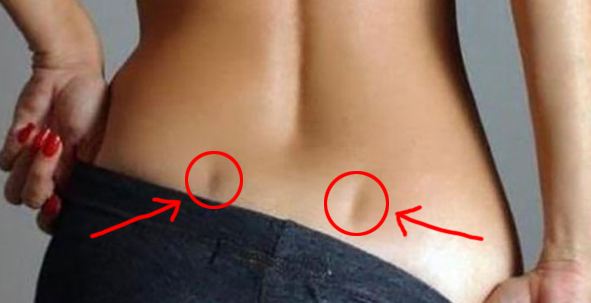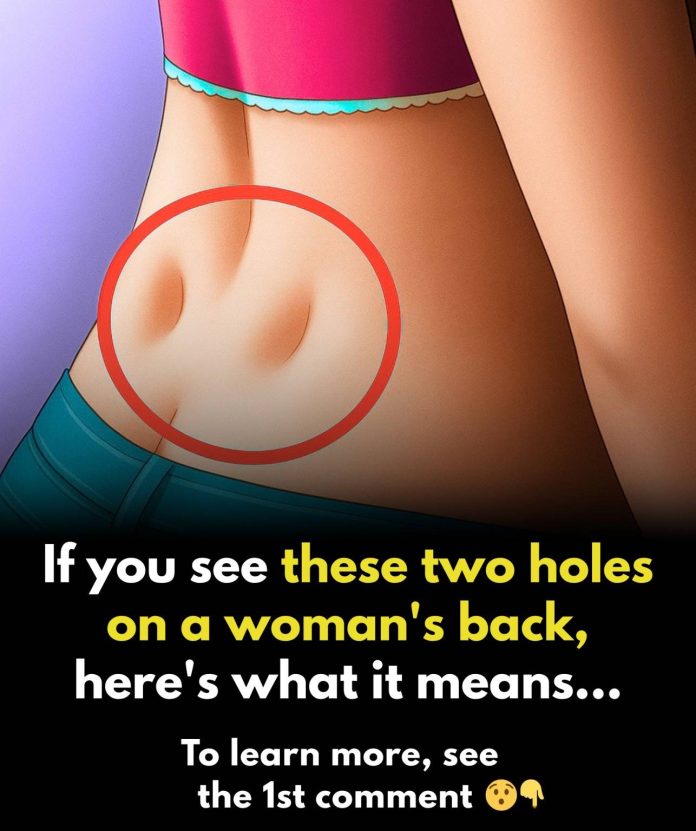Some people naturally have two small indentations on their lower back, positioned just above the buttocks. These marks are often referred to as “back dimples” and have fascinated people for a long time. While they may seem like a cosmetic detail, they actually reflect interesting aspects of human anatomy and body structure. Understanding what they are and what they are not can help clear up common misconceptions.
Where These Dimples Form
The small indentations form where the pelvis meets the spine. Beneath the skin is a joint known as the sacroiliac joint, which connects the sacrum to the pelvic bones. At this meeting point, ligaments, nerves, and connective tissues create natural contours. In some individuals, the tissue arrangement leaves a visible dip, creating the well-known dimples. These features are not muscles and do not indicate anything unusual about the bones. They simply reflect how the person’s skin and underlying structures align. Biologically, they are harmless and do not affect movement or posture.

Why Some People Have Them and Others Don’t
The presence of lower-back dimples is mostly influenced by genetics. Just like traits such as ear shape, dimples on cheeks, or hair texture, these small marks tend to run in families. Some individuals inherit connective-tissue patterns that naturally create the indentation. For others, the tissue sits evenly, so the dimples don’t appear. It’s important to emphasize that having or not having these dimples does not reflect fitness, weight, or health. They are simply one of many variations in human body structure.
Their Connection to Blood Circulation
In anatomy discussions, these dimples mark areas where blood vessels pass close to the skin’s surface. For this reason, some people believe the dimples are connected to better circulation in that region. While their presence can help professionals locate certain landmarks on the body, they do not guarantee any particular health benefit. They’re more of a visible guide than a medical indicator.
Common Myths and Misunderstandings
Because these dimples look distinctive, many myths have developed around them. Some people believe they signal flexibility, strength, or even certain personality traits. Others think they only appear in people who exercise a lot. None of these claims have scientific backing. They also do not indicate a problem with the spine or hips. They don’t suggest bone misalignment, nor do they point to underlying medical issues. People without dimples are not missing anything, and those with them do not automatically have superior physical abilities.
Do They Change Over Time?
Lower-back dimples generally remain consistent throughout adulthood. However, their visibility can shift slightly if someone’s body composition changes. For instance, gaining or losing body fat might make them appear more or less noticeable, but the underlying anatomical structure remains the same. Because these dimples are tied to bone and ligament placement, they do not disappear entirely unless the natural contour is covered by surrounding tissue. They are not something that can be created through exercise, stretching, or targeted workouts.

Why People Find Them Interesting
Although the dimples are largely a neutral anatomical feature, many people find them visually unique simply because they are uncommon. Their symmetry and location draw attention, and their rarity makes them a topic of curiosity. This interest, however, is mostly cultural and aesthetic rather than biological.
A Normal Variation of the Human Body
Ultimately, lower-back dimples are just one of many natural variations in human anatomy. They do not indicate health status, do not require treatment, and do not hold deeper meaning. They simply reflect how an individual’s bones, ligaments, and skin align. Understanding them can help people appreciate body differences without assigning unnecessary interpretations. Whether someone has these dimples or not, both are entirely normal and part of the natural diversity of human appearance.

















